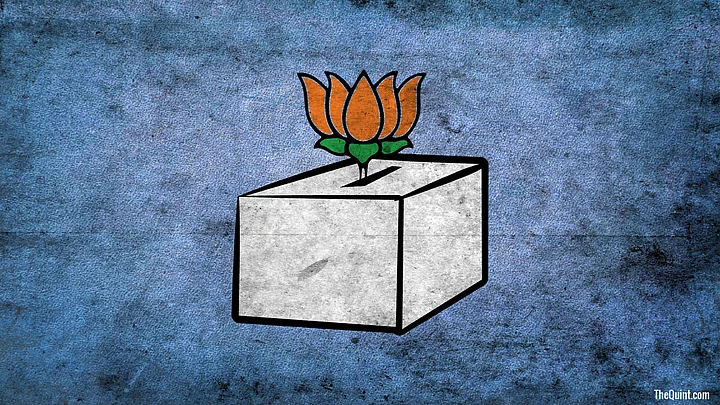After a claimed landslide in Uttar Pradesh that never was, analyses coming out now paint a different picture. Sample a few facts:
- Nearly 45 percent of Bharatiya Janata Party (BJP) candidates lost their security deposit in the recently concluded civic polls in Uttar Pradesh. Even party leaders contesting the elections for the prestigious posts of municipal council chairman and heads of nagar panchayats lost their security deposits.
- The BJP’s overall vote share dropped by nearly 10 percentage points since the March 2017 Assembly elections. The BJP’s vote share of nearly 30 percent is comparable to what ruling parties have been getting in the state in the last two decades.
- Even in big cities where the BJP claimed 14 out of the 16 posts of mayor, the party’s vote share slipped by nearly 9 percentage points compared to what the party had secured in the 2014 Lok Sabha elections. In these areas, the BJP had registered big wins in the Assembly elections too.
- In tier-II cities and towns, the BJP’s vote share slipped below the psychologically important mark of 30 percent. What is more, the party lost the number one position to independents in these areas.
Downward Slide More Than Evident
The slide is more pronounced compared to the BJP’s performance in the state not long ago. Juxtapose these facts with what the BJP had got in the 2014 Lok Sabha and March 2017 Assembly elections.
- In the 2014 Lok Sabha elections, the BJP had won 71 of the 78 seats it contested with a record vote share of 43.7 percent.
- The party had established lead in 328 of the 403 Assembly segments.
- In 94 out of those 328 Assembly segments, the BJP had a vote share of more than 50 percent!
- In 253 of the 328 Assembly segments, the BJP had a vote share of more than 40 percent!
- In the March 2017 Assembly elections, the BJP had a vote share of nearly 42 percent in the seats the party had contested (Overall vote share was slightly less than 40 percent after being adjusted for the entire state).
- BJP’s vote share in 74 percent of the seats (232 seats) it won was more than 40 percent.
- The party’s average margin in seats it won was an impressive 15 percent. In other words, the difference between the BJP and the party occupying number two position was more than 15 percent.
From such an absolute domination to less than average performance in three years in Uttar Pradesh, the BJP has seen quite a slide. And let us remember that the slide has happened in urban areas which are otherwise considered the BJP’s traditional stronghold.
BJP Has Had Firm Grip Over Urban Voters in Gujarat
A more disaggregated analysis of the recently concluded civic poll results suggest that the slide is more pronounced in smaller towns and cities. Is this a warning signal for the BJP in Gujarat? The saffron party has had a stellar run in Gujarat, thanks to its absolute domination in urban areas.
The Congress was a distant second in entire urban region of the state five years ago.
What could be the reason for such a steep slide in UP? Demonetisation, shoddy implementation of the Goods and Services Tax (GST) and falling economic growth are offered as ready-made explanations.
What has perhaps gone against the BJP is what is known as the crisis of rising aspirations. The BJP, from what we keep hearing from the people, had promised a lot. The growing realisation that the delivery has been perhaps slow and piecemeal may have led to some alienation.
The tardy pace of employment expansion has not helped the case either.
In the context of Gujarat, other than the 22 years of incumbency, where there is no one else to blame for the perceived lack of all-round progress, what has perhaps led to further disenchantment is the growing commercialisation of education in the state. Our reporters who came back after extensive tours of the state told us stories about how higher education in the state has gone beyond the reach of ordinary folks.
Lack of affordable educational opportunities has pushed many youngsters to take to agitations of various persuasions. The likes of Hardik Patel, Jignesh Mevani and Alpesh Thakore have made the most of growing alienation among the younger sections of population.
Is there a risk of the BJP losing its firm grip in urban pockets? One must not draw any conclusion on the basis of just one set of elections, that too of highly localised civic bodies. However, if the latest set of results becomes a trend and plays out in Gujarat too, the BJP has something to think about.
(At The Quint, we question everything. Play an active role in shaping our journalism by becoming a member today.)
